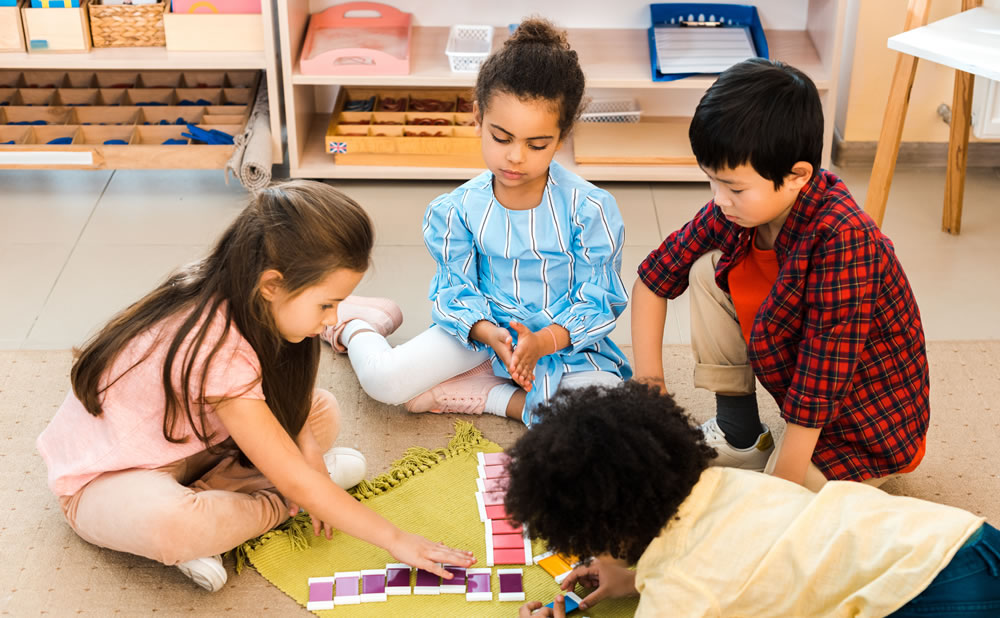
3 ways SEL helps students build life readiness
SEL can be integrated into core classes through intentional community building and purpose learning
Social and emotional learning (SEL) may still be new to some educators, but the skills it teaches are the same we have been trying to help young people develop for decades. Adaptability, agency, collaboration, empathy, self-awareness, and purpose are skills and qualities employers seek in their employees, and—more than that—skills that support young people to thrive on whatever path they choose to follow.
Of course, we can’t talk about skill-building without addressing the environment in which students are expected to learn. After nearly two years of isolation, fear, and instability, many students and educators alike are showing up to school feeling far from their best—and the fallout is palpable, with student mental health deteriorating, academic performance faltering, and teachers resigning in record numbers.
Fortunately, we know that SEL supports students’ academic performance and overall well-being, and it doesn’t need to come at the expense of content instruction. SEL can be integrated into content classes, through intentional community building and purpose learning that makes schools more fun and supportive places for students to learn and teachers to teach.
Following are best practices to ensure that students graduate ready for life ahead.
- Create mutual respect and trust: When students don’t feel safe, it’s harder for them to learn. Building a foundation of security and belonging is key to helping students (and teachers) feel safe to fail and try again.
Like many educators, I grew up in a time when schools emphasized respecting adults and not challenging authority. While respect remains important, the idea (in schools and society more broadly) has grown less unilateral—and for good reason! When students see teachers as authoritarian figures and learn that doing the “wrong thing” is cause for punishment, fear can hold them back from taking risks. Without this fear, students build resiliency, grow more willing to push themselves out of their comfort zones, and learn more readily.
In classrooms, replacing teacher-created rules with co-created classroom norms is a powerful way to build a culture of belonging and support student engagement, self-awareness, and collaboration. Training teachers gives them tools to co-create norms with students. This practice gives young people the chance to lead by shaping and owning their surroundings and by holding themselves to personally meaningful standards.
- Include students in decision making: Interruptions to school necessitated by the COVID-19 pandemic have made it exponentially harder for young people to find meaning in school. What better way to help students reconnect than inviting them to make an actual impact on campus? If we think of school as a microcosm of the world, then we can see genuine opportunities for students to collaborate on school-wide issues as practice for their life after graduation.
You can start by making students part of school committees or leadership teams. The input they offer can help us think through tricky issues around grading, school climate, dress code, COVID safety protocols, and more. As they help their schools become more welcoming places for themselves and their peers, students also grow more purposeful in their role on campus, empowered to be stakeholders in the school community.
Teachers can also help students prepare for leadership through explicitly practicing SEL in the classroom. High-quality lessons will guide students to understand their personal strengths as resources, analyze the intent vs. the impact of their actions, and work through scenarios to create mutually beneficial solutions to hypothetical conflicts. By making well prepared students participatory members of decision-making bodies, schools can make their campuses more welcoming and their students more purposeful and engaged.
- Commit to learning together. Years of research tell us that project-based learning (PBL) is better than traditional “banking” models of instruction at helping students think critically and strengthen the skills used in professional settings today. It helps students find meaning in their studies, provides opportunities to practice self-assessment and self-management, and connects classroom learning to the real world.
Granted, the “all schools should do PBL” philosophy is far easier said than put into practice. However, there are many small ways to incorporate elements of experiential learning. For example, math units on fractions and decimals taught through cooking delivers content while also giving students the chance to learn about their classmates’ foods and families and to collaborate on a goal more meaningful than a correct answer.
School and community partners can also be resources for teachers branching out into new ways of teaching. Content teachers can connect with college counselors or work-based learning coordinators to bring in professionals to give presentations or lead lessons. These outside professionals can provide students with direct access to experiences that make classroom learning tangible while removing some of the burden of curriculum (re)creation from teachers. For the full experience, engaging students in multi-modal projects on topics of their choosing can’t be beat.
Ultimately, our goal is for students to develop the content knowledge, self-awareness, and interpersonal skills to support their future success. A supportive atmosphere lays the foundation for students to engage in meaningful collaboration and leadership and supports students to become the graduates well-prepared to face life’s challenges that we know they can be.